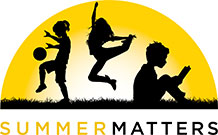Components of a High Quality Pre-Service Staff Training
July 25, 2016
Core Components of a High-Quality Pre-Service Staff Training
Include discussions and demonstrations in your staff training on the following topics:
Why are we offering this particular program?
- Summer learning loss and the achievement gap
- Eligibility requirements or recruitment strategy for youth in the program. Who are our participants? How were they identified? What are their needs and assets?
- The program’s goals for youth outcomes and quality improvement, including measures of success this summer
- What quality practice looks like and why it matters
Who is an important part of our program, and what can we expect from them?
- Team building and getting to know you activities for staff
- The program’s attendance policy and plans to reduce the no-show rate and maximize program attendance
- The attendance tracking system
- The student information database
- MOUs with program partners that outline roles, responsibilities, and resource allocation
- Availability of certified teachers to assist non-teachers in program planning and delivery
- Role and responsibility of site coordinators to make decisions for the benefit of their site, including day-to-day budget, vendor, field trip, and personnel decisions
How will we achieve our intended goals, and how will we know we were successful?
- Overview of themes, scope, and sequence of curriculum, including connections to academic standards, pacing and sound instructional and youth development strategies. Allow time for modeling and practice in small and large groups. Ensure all staff understands what’s happening during the full program day, not just the morning or afternoon.
- Behavior management strategy, including incentives or recognitions, program culture, rituals, and traditions
- Paid collaborative planning time for frontline staff and site coordinators to plan curriculum and special events, including the culminating event
- The program’s plans to support the healthy growth and development of participants through meals and exercise
- The program’s evaluation process, including assessments, protocol, and feedback loop
- The staff observation protocol. Communicate expectations for the observation content, process, and feedback loop during staff training.
The family engagement strategy, including expectations for family participation in the program and two-way communication with staff about successes and struggles
When will all of this happen?
- The comprehensive program schedule complete with special events and field trips


